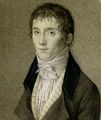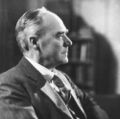Template:Selected anniversaries/March 7: Difference between revisions
No edit summary |
No edit summary |
||
| (64 intermediate revisions by the same user not shown) | |||
| Line 1: | Line 1: | ||
<gallery> | <gallery> | ||
File: | File:Joseph_Nicéphore_Niépce.jpg|link=Nicéphore Niépce (nonfiction)|1765: Inventor [[Nicéphore Niépce (nonfiction)|Nicéphore Niépce]] born. He will invent heliography, a technique he will use to create the world's oldest surviving product of a photographic process. | ||
File:Antoine Becquerel.jpg|link=Antoine César Becquerel (nonfiction)|1788: Physicist and academic [[Antoine César Becquerel (nonfiction)|Antoine César Becquerel]] born. He will pioneer the study of electric and luminescent phenomena. | File:Antoine Becquerel.jpg|link=Antoine César Becquerel (nonfiction)|1788: Physicist and academic [[Antoine César Becquerel (nonfiction)|Antoine César Becquerel]] born. He will pioneer the study of electric and luminescent phenomena. | ||
File:G I Taylor.jpg|link=G. I. Taylor (nonfiction)|1886: Mathematician and physicist [[G. I. Taylor (nonfiction)|G. I. Taylor]] born. He will make major contributions to fluid dynamics and wave theory. | |||
File:G I Taylor.jpg|link=G. I. Taylor (nonfiction)|1886: Mathematician and physicist [[G. I. Taylor (nonfiction)|G. I. Taylor]] born. He will make major contributions to fluid dynamics and wave theory. | |||
File: | File:Betty Holberton.jpg|link=Betty Holberton (nonfiction)|1917: Pioneering computer scientist and programmer [[Betty Holberton (nonfiction)|Betty Holberton]] born. She will be one of the six original programmers of ENIAC, the first general-purpose electronic digital computer, and the inventor of breakpoints in computer debugging. | ||
File:Klaus Fuchs.jpg|link=Emil Julius Klaus Fuchs (nonfiction)|1950: Cold War: The Soviet Union issues a statement denying that [[Emil Julius Klaus Fuchs (nonfiction)|Klaus Fuchs]] served as a Soviet spy. | File:Klaus Fuchs.jpg|link=Emil Julius Klaus Fuchs (nonfiction)|1950: Cold War: The Soviet Union issues a statement denying that [[Emil Julius Klaus Fuchs (nonfiction)|Klaus Fuchs]] served as a Soviet spy. | ||
File:Confessions of a Quantum Artist-Engineer.jpg|link=Confessions of a Quantum Artist-Engineer (1)|2019: Steganographic analysis of ''[[Confessions of a Quantum Artist-Engineer (1)]]'' unexpectedly reveals "at least two-hundred and fifty-six kilobytes" of previously unknown Gnomon algorithm functions. | |||
| | |||
| | |||
</gallery> | </gallery> | ||
Latest revision as of 09:35, 25 March 2024
1765: Inventor Nicéphore Niépce born. He will invent heliography, a technique he will use to create the world's oldest surviving product of a photographic process.
1788: Physicist and academic Antoine César Becquerel born. He will pioneer the study of electric and luminescent phenomena.
1886: Mathematician and physicist G. I. Taylor born. He will make major contributions to fluid dynamics and wave theory.
1917: Pioneering computer scientist and programmer Betty Holberton born. She will be one of the six original programmers of ENIAC, the first general-purpose electronic digital computer, and the inventor of breakpoints in computer debugging.
1950: Cold War: The Soviet Union issues a statement denying that Klaus Fuchs served as a Soviet spy.
2019: Steganographic analysis of Confessions of a Quantum Artist-Engineer (1) unexpectedly reveals "at least two-hundred and fifty-six kilobytes" of previously unknown Gnomon algorithm functions.





